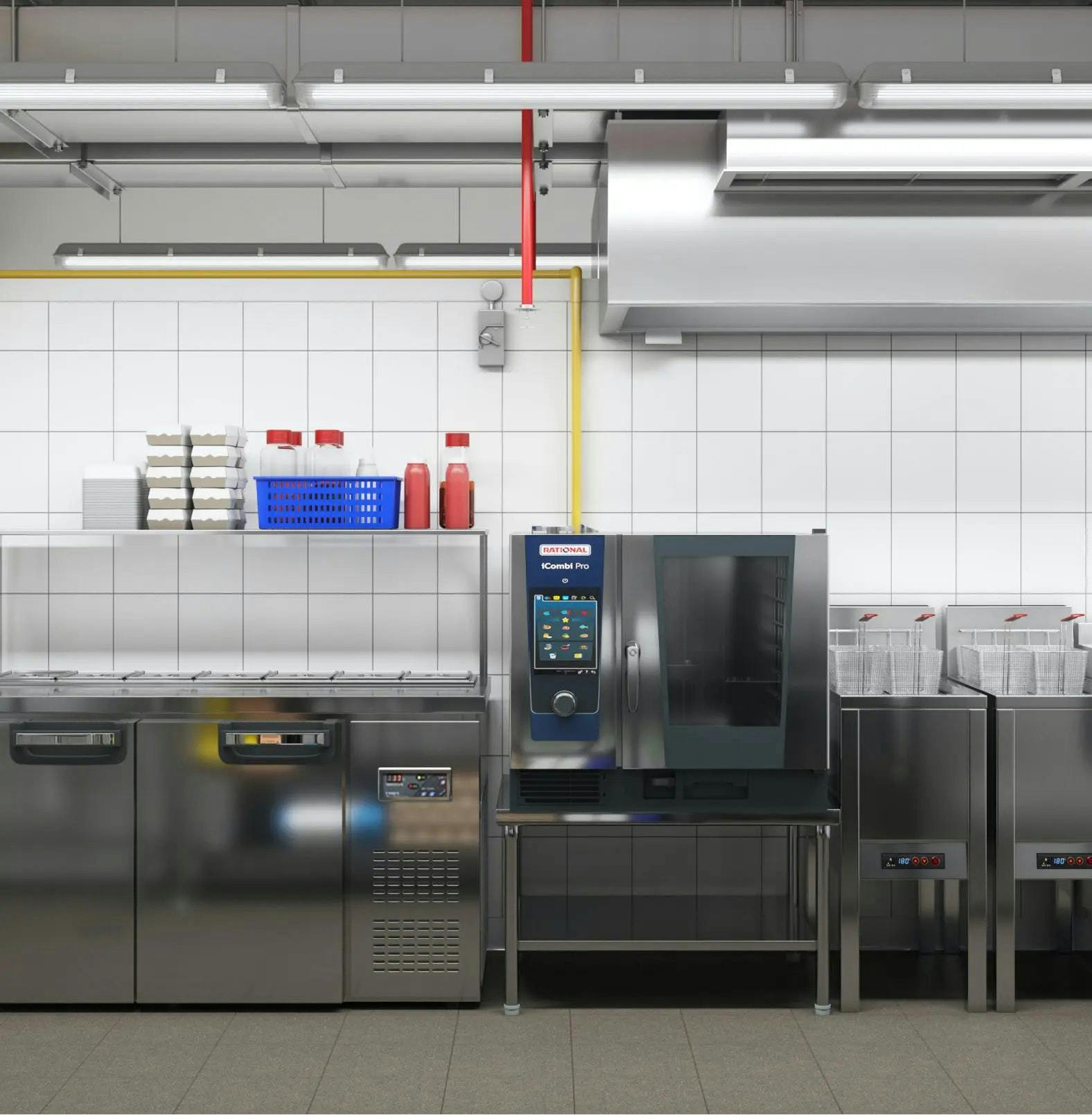If you run a business in the F&B industry, you’ll know just how competitive the space is. Restaurants go out of business as quickly as they pop up, and COVID has only exacerbated that. Only a successful restaurant will be able to survive and have sustainable P&L in the long term. It does this by constantly striving to widen its profit margin through the latest and most innovative food tech solutions.
One of those solutions is CloudKitchens® delivery kitchens, and they’re overhauling the entire kitchen model by eliminating all of the outdated inefficiencies and replacing them with more modern, solution-driven approaches.
If you’re curious about how these CloudKitchens® delivery kitchens can help you squeeze more room into your profit margin, you’ve come to the right place. Let’s start with the very basics:
What is a Profit Margin?
Your profit margin is how much money you’ve made from your sales. If you subtract all your restaurant’s expenses from your total revenue, this is how much profit you’ve made. Profit can be represented as either a raw currency figure or a percentage. You can also be incredibly granular with this figure and do it per dish or with a set time period like a week, month, or year.
As a restaurant, most of your revenue will come from selling food and drink (bar some smaller sales you might make like merchandise). But your expenses will come from a vast variety of places, including:
- Raw ingredients
- New equipment & repairs
- Rent
- Utilities
- Team payroll & other labour
- Marketing-related activities
- Taxes
- Credit card & POS system fees
- And more.
These costs may vary depending on how well your restaurant is performing, meaning your profit margin can go up and down even if your revenue stays the same. All these varying costs mean that the average restaurant P&L margin sits at around 3-5%. However, healthy and successful restaurants usually sit around 15%.
Gross vs Net: What’s the Difference?
Going into a bit more detail, there are actually two types of profit margin: gross and net.
Your gross profit margin refers to all the remaining money after subtracting the Cost of Goods Sold (CoGS). This gives you a good idea of how efficient your restaurant is and how much theoretical profit it will make. The formula for gross profit margin is as follows:
Gross profit margin = ((selling price – CoGS) / Selling price) x 100
For example, a restaurant that sells $1000 worth of dishes in one day that cost them $500 to make would find their gross profit margin by doing the following:
((1000 – 500)/1000) x 100 = 50%
On the other hand, the net profit margin refers to the actual profitability of your restaurant. You can find your net profit margin by doing the following:
((Total revenue – total expenses)/revenue)x 100
For example, let’s imagine that the restaurant above got an order wrong and had to remake a dish. The restaurant’s revenue might have been expected, but its expenses would have risen to $560. They would find their net profit margin by doing:
((1000- 560)/1000) x 100 = 44%
So, How Do You Go About Improving the P&L of Your Restaurant?
As with all businesses, there are three main ways to improve your restaurant’s profit margin. Either you can:
- Increasing your sales volume,
- Decreasing your costs,
- Or increase your prices.
For a restaurant, the first two are your most likely options. Increasing your prices is one way to scare away some of your customers, thus reducing sales volume and not having much of an impact on overall profits. Related to the second point, read more about recipe costing in our recent article.
How Can Ghost Kitchens Help With the P&L of Your Restaurant?
As a restaurant owner, you might wonder how you can magically increase your sales volume or decrease your costs – something else that would hurt your business in the long run. The puzzle seems impossible to crack when you have so many expenses which you just can’t run a restaurant without – like labour, rent, and the lot.
But this is precisely where ghost kitchens come into play by helping you simultaneously increase your sales volume while decreasing costs without hurting the quality of your food. How?
1. They Dramatically Reduce Operational Expenses
With no dine-in customers, you won’t have to spend so much on furniture, a nice front-of-house area, decor, additional cleaning costs, etc.
2. Rent is Reduced When Not Catering to Dine-In Customers
Without the aforementioned front-of-house and seating area, you can condense your restaurant into a much smaller space that is primarily used for your kitchen. Less rent but an equal or greater output is a miracle for boosting profit.
3. Staff Needs are Lessened With No Front-of-House
In a ghost kitchen, you can work with a much smaller team to get the same level of output. You won’t have to worry about taking customer orders in-house, cleaning up tables, bartenders, dishwashers, and more. A smaller team means you have more money to spend on growth instead of payroll.
4. Ghost Kitchens Offer Plenty of Quick Rewards For Little Risk
Opening a new restaurant or expanding your current one is always a considerable risk, but the F&B landscape is especially harsh. The amount of money you need to invest in opening a new location is tremendous, and even after that, there’s no guarantee the new restaurant will sustain healthy P&L. You’re then stuck with rental contracts that generally extend for the next year or more and new equipment you’ll have to ditch or sell.
With a ghost kitchen, you can be significantly more flexible and agile. Rental terms are much shorter with an operator like Smart City Kitchens, most of the equipment is already there, and renovations are already complete when you move in. If it doesn’t work out, withdrawing is easy and painless.
5. Quick Startup Times
Another benefit of ghost kitchens is how quickly you can get set up. Opening a traditional brick-and-mortar restaurant can take months, sometimes up to a year, from start to finish, including preparation, planning, sourcing contractors and renovators, and more. With a ghost kitchen, you can be up and running in weeks and start pumping out orders right away.
6. Streamlined Operations
Without having to worry about dine-in customers, ghost kitchens can have a much more streamlined approach to their kitchen. Ghost kitchen spaces, especially those provided by Smart City Kitchens, are highly optimised for preparing food most efficiently and smartly. A tablet at the centre of the kitchen tracks all orders and can give you granular insight into the performance of your kitchen, even if you work with more than one food delivery business. You’ll never miss an order or keep a customer waiting with it.
In a kitchen like this, your staff can focus on preparing the best possible food for your customers and driving the things that ultimately matter the most: a great experience that keeps people coming back for more and a positive restaurant P&L.
7. Contributing to the Future of F&B
The future of F&B lies in delivery orders. By starting your own ghost kitchen – whether for a new brand or to complement an existing one – you are contributing to this shift in the industry. Instead of lagging behind, become an early adopter and capture the market while it’s still ripe for success. You can learn more about our ghost kitchen spaces here or read more about choosing the right location in Singapore.
Moving Ahead With Ghost Kitchens…
To put it simply, ghost kitchens offer a swathe of benefits that contribute to a more positive P&L for your restaurant business. That being said, they can’t guarantee success without the right amount of input from you and your team. You’ll need to ensure that you:
- Have a solid team of chefs
- Prepare a visually appealing, appropriately priced, and attractive menu
- Target a market that is under-supplied. This will vary on your target audience and specific location
- Advertise and promote your restaurant brand well, given that you won’t be having as many walk-in customers
- Find the right supplier.
If all of these are checked off, you’re well on your way to widening your profit margins and finding success in this ever-competitive market.
Have any other questions or want to learn more about our ghost kitchen spaces? Get in touch with us by filling out the form below!

